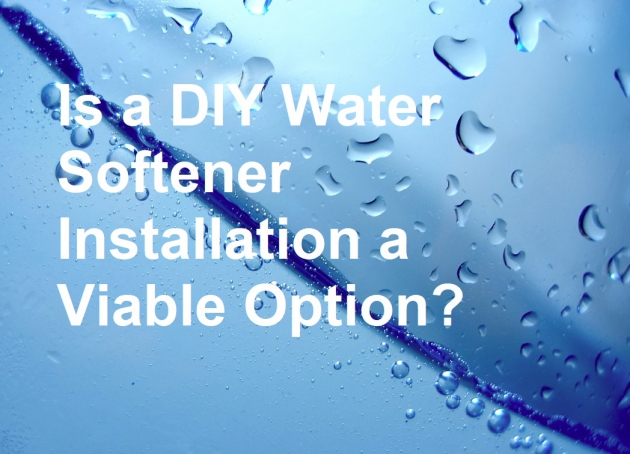If you have some basic DIY skills, you may be able to install a water softener in your home. But, for most of us, this is not a viable option and it’s all too easy to make mistakes. If you’re determined to attempt an installation, here are four things that you need to bear in mind:
1. This is a Major Plumbing Project
Before you get started, it’s important to understand that this is a major plumbing project. To install a water softener you will need to cut into the main water line, connect the line to the control valve inlet and outlet. This stage is probably the most difficult, if you’ve tackled plumbing jobs before and you can finish this part of the installation you’re likely to succeed. As the installation continues, the tasks become more specialized, but they are less technically demanding.
2. Connect the Bypass Valve
Modern ion exchange water softeners have a bypass valve that is sometimes referred to as a “plumbing yoke”. This is the component that the pipes connect to and these connections often terminate with male threads. To connect the bypass valve, marry the plumbing pipes to the threaded connections and secure them without overtightening.
3. The Plumbing Material
The plumbing material used in your home will give you an insight into the skills needed to tackle this project successfully. The two materials found in most modern plumbing systems are copper and PEX. The classic plumbing material is copper and this can present significant challenges for an inexperienced plumber.
To modify copper it’s important to understand how to “sweat” it and this is often and incorrectly referred to as soldering. When a plumber is sweating copper, they heat up two pieces that they want to connect together and then melt them together to create a watertight seal. In principle this is simple, but it’s a tricky skill to master and it takes a lot of practice to learn to perfect this process.
PEX is a semi-rigid plastic plumbing material that has become the de facto choice in many new homes and renovation projects. This material is much easier to work with and using it can significantly shorten the time needed to complete the job. Many DIY plumbers prefer to work with PEX because they can get professional results with sweating copper.
4. Water Softener Connections
The connection points are located on the control valve, but two more pipes need to be connected, the brine line and the drain line. The drain line carries the wastewater to the drain during the regeneration cycle and the connector has a barbed fitting. This is needed to connect soft plastic materials that are not subjected to high water pressures. The bi-directional brine line carries water to the brine tank, salt is added and then this brine solution is sent to the control valve. The brine line may have a push-to-connect or compression style fitting depending on the specific system.
If you’re considering a water softener installation, contact your local water treatment specialist.

